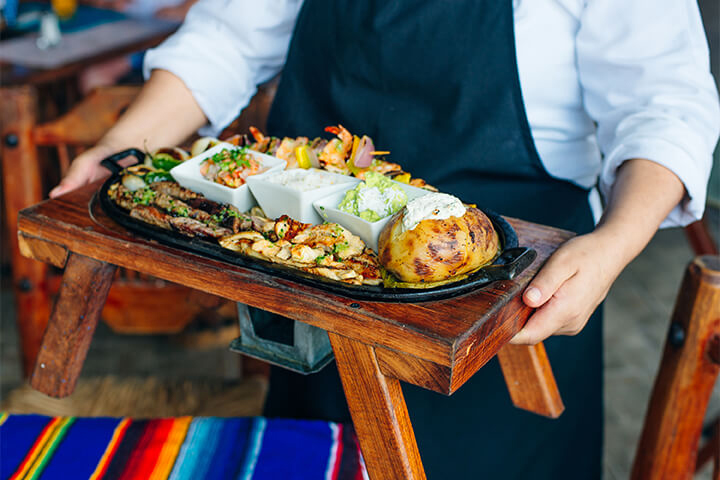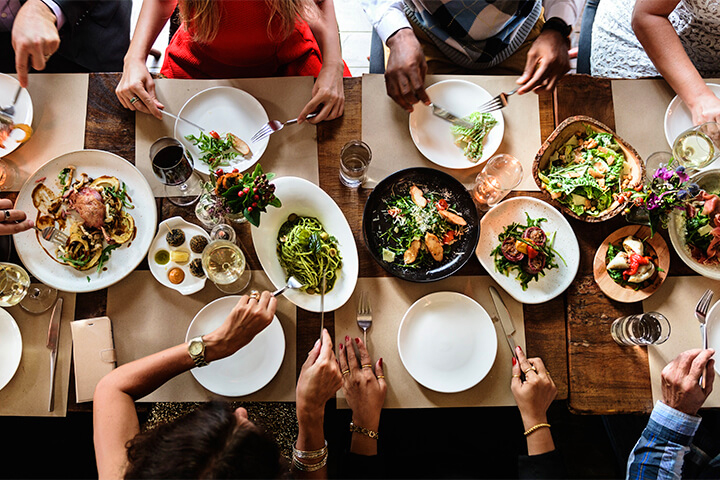In their 2024 State of the Restaurant Industry report, the National Restaurant Association shared that, “In a typical year, about 3 in 10 dollars spent in restaurants come from travelers and visitors.”
Yet not all restaurants capture the lucrative food tourist market. Fear not! With the right approach, any eatery can become a destination for curious palates. In this article, we look at food tourism across the globe and offer insights on how restaurants can position themselves to draw in food-loving travelers.
The Rise of Modern Food Tourism
Food tourism isn’t a new phenomenon. Culinary pilgrimages have existed for centuries, with travelers drawn to experience the unique flavors and traditions of specific regions. However, the term “food tourism” or “culinary tourism” gained traction in the late-20th century, fueled by a confluence of factors.
Globalization

Increased globalization led to a growing awareness of diverse cuisines, while rising disposable incomes made it easier for people to travel further and explore new culinary horizons. Additionally, the rise of food media — television shows, travel blogs, and social media platforms like Instagram and TikTok — served as a powerful marketing tool, showcasing the visual appeal and cultural significance of food. Today, food tourism remains a robust and evolving sector, with culinary travelers spending more per trip on average compared to general tourists.
Popular Grub Hubs
Certain destinations are synonymous with food tourism. Italy, with its regional specialties and the New York City area with its innovation and culinary diversity are prime example. Similarly, France, with its Michelin-starred restaurants and classic techniques, has long been a draw for gourmand travelers.
Beyond Europe and the States, countries like Thailand, known for its vibrant street food scene and emphasis on spice, and Japan, with its intricate cuisine and dedication to presentation, offer unique food experiences that attract millions of visitors annually. In Mexico, Oaxaca has gained massive popularity as a culinary destination for its cultural heritage and fresh, bright flavors.
Unexpected Gems
Culinary tourism is constantly evolving, with new destinations popping up that surprise even seasoned gastronomic adventurers. Here are a few unexpected locations that have recently gained traction:
- The American South: Beyond the classic barbecue belt, pockets of the American South are experiencing a culinary renaissance. Places like Asheville, North Carolina, and Charleston, South Carolina, boast innovative chefs reinterpreting traditional Southern dishes with fresh, local ingredients.
- The Balkans: This region offers a fascinating mix of Mediterranean, Middle Eastern, and Slavic influences. Countries like Slovenia and Georgia are gaining recognition for their unique grape varietals and innovative takes on familiar dishes like dumplings and stews.
- Industrial Revamps: Rotterdam’s Fenix Food Factory in the Netherlands houses street food vendors and innovative restaurants in a former shipyard. Similarly, Detroit’s historic Eastern Market is experiencing a resurgence, drawing crowds with its mix of ethnic cuisines and local produce.
What’s on the Menu for Food Tourists?

So, what exactly do food tourists crave? Authenticity, novelty, local ingredients, storytelling, and ambiance top the list.
Authenticity & Novelty
Travelers seek experiences that go beyond simply eating a meal; they want to immerse themselves in local food culture. This desire manifests in several ways. Many food tourists want entirely new experiences, and they want to be the ones who discover them which is why many seek out family run restaurants, street food stalls, and local hidden gems.
Restaurants seeking to attract food tourists should cultivate specific qualities:
- Focus on local ingredients: Utilizing fresh, seasonal produce sourced from regional farms not only enhances flavor but also appeals to tourists seeking authenticity.
- Share your story: Highlight the history, personal, and cultural significance of your dishes, connecting your food to the local narrative.
- Offer experiences: Go beyond just the meal. Organize cooking classes, market tours, farm visits, and more, allowing them to connect with local producers and understand the origin of the ingredients they are consuming.
Ambiance Also Matters
A restaurant that reflects the local culture, be it through its decor, music, or service style, creates a sense of immersion. Think of a lively taqueria in Mexico City or a cozy farmhouse restaurant in Tuscany. Don’t underestimate the power of warm hospitality. Food tourists appreciate being treated not just as customers, but as guests experiencing a new culinary world.
Marketing for Maximum Impact: Where to Reach Food Tourists

Reaching the right audience is crucial. Online travel agencies (OTAs) like TripAdvisor and food-focused platforms like Yelp and Resy are valuable tools. Partnering with local tourism boards to be included in their promotional materials can also increase visibility.
Social media is another powerful tool. Keep your social media platforms — especially Instagram — up to date and full of high-quality photos that showcase the best and most aesthetic dishes your restaurant has to offer. Highlighting your values in social media, especially if your reach extends to the community at large by, for instance, partnering with local charities or participating in festivals.
Engaging with food bloggers and Instagrammers in your region who are interested in culinary travel can leverage their reach to showcase your restaurant’s offerings. Invite a successful travel food blogger to your restaurant and treat them to a world-class meal.
The Takeaway

Food tourism presents a significant opportunity for restaurants to expand their customer base and boost revenue. By understanding food tourists’ desires and strategically positioning themselves, even lesser-known establishments can capture a share of this lucrative market.



